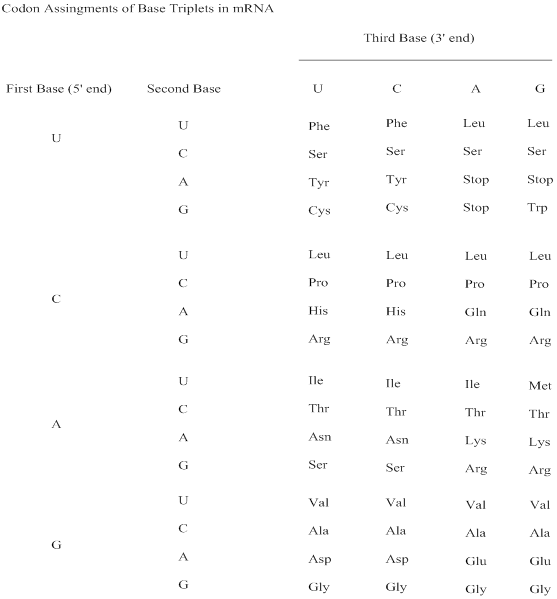
Concept explainers
Interpretation:
The double-stranded DNA sequence code for metenkephalin has to be predicted.
Concept Introduction:
Base pairing in DNA: The two strands of the DNA double helix run in the opposite directions- one in 5’ to 3’ direction and other from 3’ to 5’ direction. The hydrogen bonding between two strands enhances the stability of the DNA; where the alignment of hydrophobic nitrogenous bases in the interior and hydrophilic phosphate and sugar groups on the exterior also enhance the stability. Adenine and thymine gives a pair forming two hydrogen bonds and cytosine and guanine gives rise to another pair forming three hydrogen bonds.
Codon: A sequence of three ribonucleotides in the mRNA chain that codes for a specific amino acid; also a three-
Genetic code: The sequence of nucleotides, coded in triplets (codons) in mRNA that determines the sequence of amino acids in protein synthesis.

Illustrated relationships are:
DNA informational strand: 5’ ATG CCA GTA GGC CAC TTG TCA 3’
DNA Template strand: 3’ TAC GGT CAT CCG GTG AAC AGT 5’
mRNA: 5’ AUG CCA GUA GGC CAC UUG UCA 3’
protein: Met Pro Val Gly His Leu Ser
Notice: 5’ end of the mRNA strand codes for the N-terminal amino acid, whereas the 3’ end of the mRNA strand codes for the C-terminal amino acid. Proteins are always written N-terminal to C-terminal, reading left to right.
Want to see the full answer?
Check out a sample textbook solution
Chapter 26 Solutions
FUNDAMENTALS OF GENERAL CHEM VOL 2
- For a protein-DNA binding reaction with ΔH = 0, sketch the van’t Hoff plot, label both axes.arrow_forwardQuinolone antibiotics treat bacterial infections by blocking the activity of topoisomerase. Why does this treatment work? Explain what occurs at the molecular level.arrow_forwardHow many kilobases of the DNA strand below will code for the protein product?arrow_forward
 Human Heredity: Principles and Issues (MindTap Co...BiologyISBN:9781305251052Author:Michael CummingsPublisher:Cengage Learning
Human Heredity: Principles and Issues (MindTap Co...BiologyISBN:9781305251052Author:Michael CummingsPublisher:Cengage Learning Biology 2eBiologyISBN:9781947172517Author:Matthew Douglas, Jung Choi, Mary Ann ClarkPublisher:OpenStax
Biology 2eBiologyISBN:9781947172517Author:Matthew Douglas, Jung Choi, Mary Ann ClarkPublisher:OpenStax

